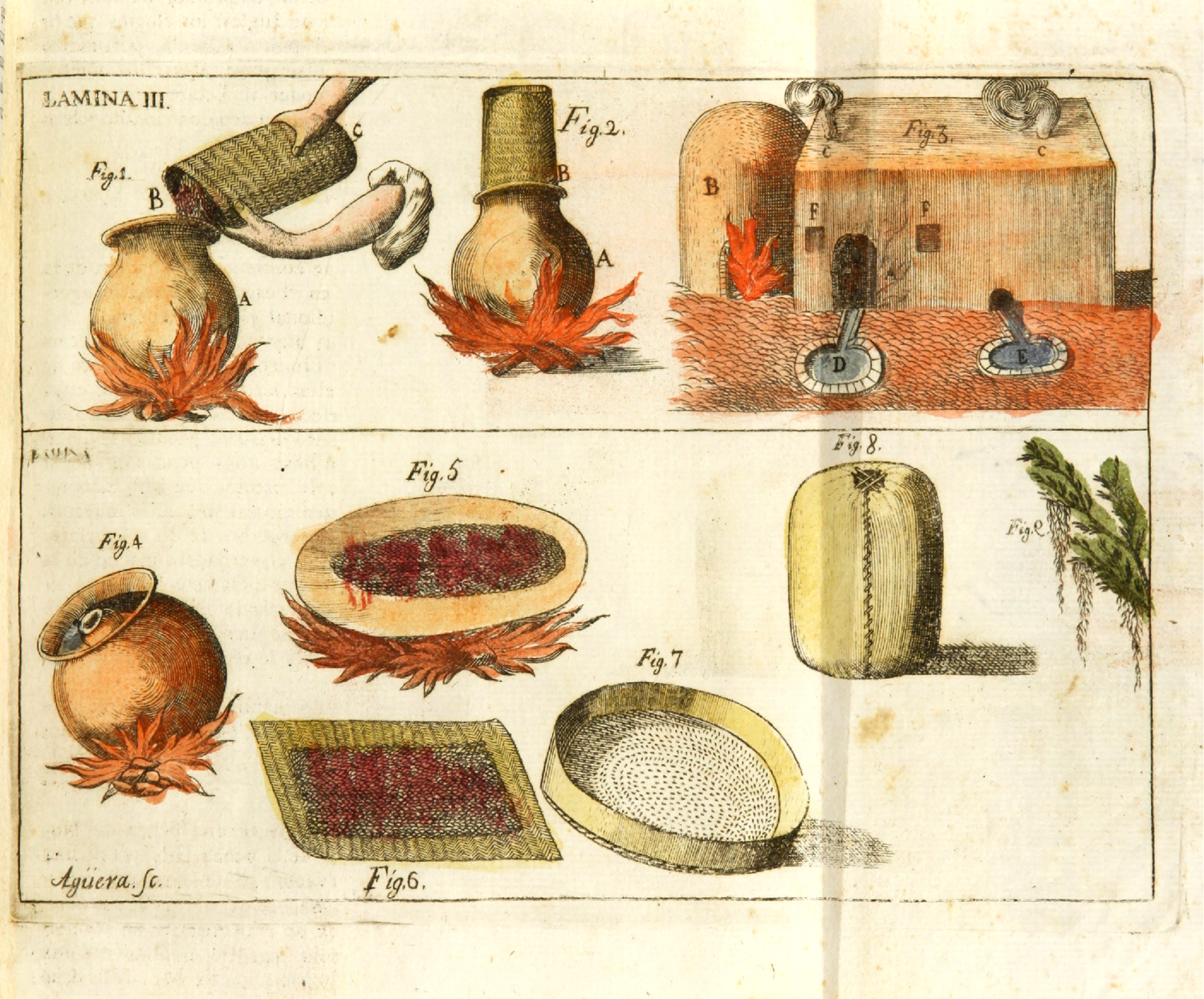José Antonio de Alzate y Ramírez, one of New Spain’s most respected and prolific scholars, was charged by Viceroy Antonio María de Bucareli with producing a detailed report on cochineal. Alzate’s Memoria sobre la naturaleza, cultivo y beneficio de la grana (Treatise on the Nature, Cultivation and the Processing of Cochineal) is, like the rest of his oeuvre, an enlightened effort to inventory and study the commercial, economic and medical uses of Mexico’s natural treasures. Alzate begins his Memoria in a critical fashion typical of enlightened Creole discourse in Hispanic America, dismissing the ‘absurd and ridiculous things’ written by European naturalists. Alzate presents the results of his own experiments and observations of the insect’s morphology and life cycles. For precise information on the cultivation and harvesting of cochineal, Alzate relied upon Oaxacan informants. The cultivation of cochineal was a labour-intensive task carried out exclusively by indigenous communities. It depended on detailed knowledge of seasonal cycles of cold and rain, and on regimens of care such as building nests for the insects before releasing them onto the cactus, sheltering them from the cold and protecting them from predators and dirt by brushing them gingerly with squirrel and deer tail hairs. To harvest the insects after they reached maturity, the indios scraped them gently off the cacti and then ‘suffocated’ them, either by drying them in the sun, or by placing them in wood-fired saunas or temazcales. The final product, cleaned of impurities and chaff, was packed in leather bags and shipped to regional trading centres, then on to the ports of Veracruz and Acapulco, whence the red dye made its way around the Atlantic and Pacific worlds.
COCHINEAL PRODUCTION
Instruments employed in the preparation of the dye. José Antonio Alzate y Ramírez, ‘Memoria sobre la naturaleza, cultivo y beneficio de la grana’ [1777], published in the Gazeta de Literatura, 9 August, 1794.
Miruna Achim
Further reading
- Alzate y Ramírez, J.A. (1991) Memoria sobre la naturaleza, cultivo y beneficio de la grana [1777] (Mexico City: Archivo General de la Nación).
- Butler Greenfield, A. (2005) A Perfect Red: Empire, Espionage, and the Quest for the Color of Desire (New York, NY: HarperCollins Publishers, Inc.).
- von Humboldt, A. (1811) Essai politique sur le Royaume de la Nouvelle Espagne (Paris).
- Moreno de los Arcos, R. (1989) Linneo en México: la controversia sobre el sistema binario sexual (Mexico City: UNAM).
- Museo del Palacio de Bellas Artes (2018) Rojo mexicano: la grana cochinilla en el arte (Mexico City: Secretaria de Cultura).
- Padilla, C., and B. Anderson (2015) A Red Like No Other: How Cochineal Colored the World (New York, NY: Skira Rizzoli).
- Phipps, E. (2010) Cochineal Red: The Art History of a Color (New York, NY: Metropolitan Museum of Art/Yale University Press).





